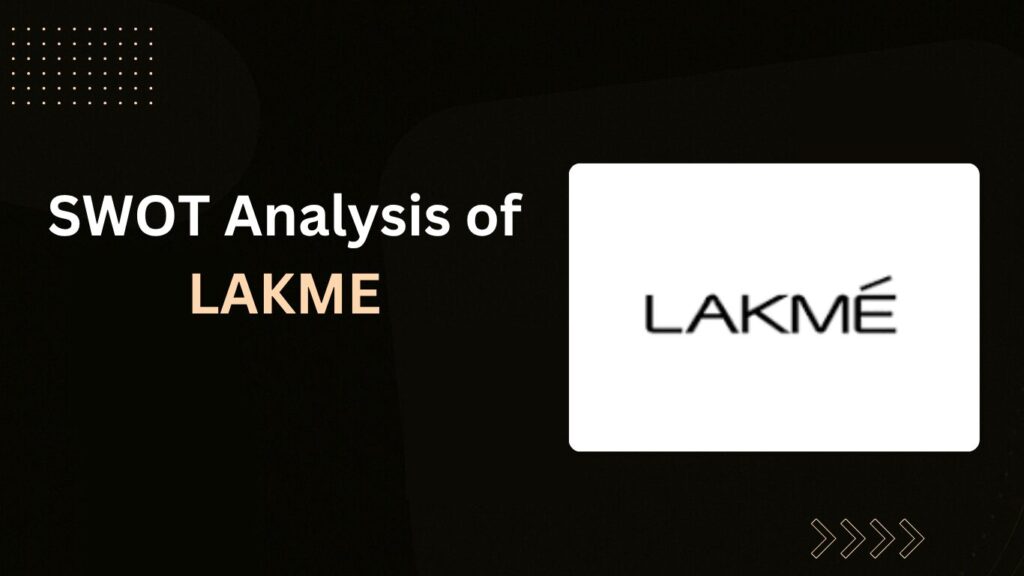Overview of Lakmé
Established in 1952, Lakmé is one of India’s most iconic cosmetics brands. Founded by the Tata Group in response to Prime Minister Jawaharlal Nehru’s request to reduce the import of foreign beauty products, it has grown into a household name. In 1998, the brand was acquired by Hindustan Unilever Limited (HUL), transforming it into a powerhouse of beauty and fashion. Today, Lakmé stands as a symbol of beauty, elegance, and innovation, known for its extensive range of skincare, makeup, and salon services.
Purpose of the SWOT Analysis
This SWOT analysis of Lakme aims to assess Lakmé’s current market position by exploring its Strengths, Weaknesses, Opportunities, and Threats, providing valuable insights for strategic planning and future growth.
About Lakmé
- Type: Cosmetics brand
- Industry: Beauty
- Founded: 1952
- Founders: JRD Tata and Simone Tata
- Headquarters: Mumbai, India
- Area served: India and other parts of Asia
- Current CEO: Sunil Duggal
- Number of employees: 2,500
- Major products: Cosmetics, skincare, haircare, and beauty services
- Parent company: Hindustan Unilever Limited (HUL)
- Market position: One of the leading beauty brands in India
- Distribution: Available in over 200,000 outlets across India including online platforms
- Brand ambassadors: Collaborated with popular Indian celebrities for brand promotion
- Sustainability initiatives: Focus on eco-friendly packaging and cruelty-free products
- Key target audience: Urban and semi-urban women aged 18-35 years
- Flagship stores: Presence in major metros and high-end retail stores
Company Background
Founding and Evolution
Lakmé’s journey began as an initiative to counteract the heavy outflow of foreign currency spent on imported cosmetics. The Tata Group, recognizing the potential in the Indian beauty market, launched the brand to cater specifically to Indian skin tones and preferences. Over the decades, Lakmé has evolved significantly, transitioning from a small cosmetics line to a comprehensive beauty brand offering everything from skincare to high-fashion makeup. Its acquisition by HUL in 1998 further fueled this growth, integrating the brand into one of the world’s largest consumer goods networks.
Product Portfolio
Lakmé’s product range is as diverse as it is innovative, including foundations, lipsticks, eyeliners, skincare creams, serums, and salon services. The brand has consistently pushed the envelope with products like the Lakmé Absolute range, designed for long-lasting wear, and its Argan Oil-infused line for premium skincare. This broad portfolio has helped Lakmé maintain a strong foothold in the competitive beauty industry.
Market Presence
Lakmé enjoys a dominant presence in the Indian market, leveraging a robust distribution network that spans retail stores, online platforms, and exclusive Lakmé Salons. Its partnership with major fashion events, like the Lakmé Fashion Week, has reinforced its status as a trendsetter in the beauty industry, appealing to a wide demographic of beauty enthusiasts.
Strengths
Strong Brand Equity:
Lakmé’s position as one of India’s first homegrown beauty brands has earned it deep-rooted brand loyalty and recognition. For instance, its association with iconic celebrities like Kareena Kapoor Khan, who has been a long-time ambassador, and its sponsorship of high-profile events like Lakmé Fashion Week have helped reinforce its premium image, making it a household name in India.
Diverse Product Portfolio:
Lakmé offers a wide range of products, from everyday essentials like Lakmé Lip Love to luxury ranges like Lakmé Absolute and professional-grade makeup like 9 to 5, catering to diverse customer needs and preferences. This versatility has positioned it as a comprehensive beauty brand.
Innovation and Quality:
Lakmé is known for staying ahead of beauty trends. For example, the launch of the Matte Revolution and Liquid Lip Color collections capitalized on the global matte lipstick trend, gaining popularity among trend-conscious consumers. Its innovative products often blend Indian beauty needs with global trends.
Extensive Distribution Network:
Lakmé’s products are available across a vast network of retail stores, e-commerce platforms like Nykaa and Amazon, and its exclusive Lakmé Salons. This extensive reach ensures high visibility and easy access for customers.
Association with Fashion:
Lakmé’s long-standing partnership with Lakmé Fashion Week has cemented its status as a fashion-forward brand, seamlessly integrating beauty with style and luxury. This collaboration provides a platform for launching new products and setting industry trends.
Weaknesses
Limited International Presence:
Despite its dominance in India, Lakmé has struggled to establish a significant footprint in international markets, limiting its global revenue potential. For instance, it faces stiff competition from global giants like L’Oréal and Maybelline in Western markets.
Perception as a Premium Brand:
Lakmé’s premium pricing can be a barrier for price-sensitive consumers. For example, in markets with strong local competitors like Sugar Cosmetics and Colorbar, customers may prefer more affordable options.
Limited Male-focused Products:
While Lakmé excels in women’s beauty, it has not fully tapped into the booming male grooming segment, missing a significant growth opportunity in categories like men’s skincare and beard care.
Product Differentiation Challenges:
With an extensive product range, maintaining clear differentiation can be challenging. For instance, its skincare lines sometimes have overlapping offerings, leading to customer confusion.
Quality Concerns in Salons:
While Lakmé Salons are popular, they have occasionally faced consistency issues in service quality, impacting customer trust and brand reputation.
Opportunities
Expansion into Emerging Markets:
With the global beauty market rapidly growing, Lakmé can tap into emerging markets in regions like Southeast Asia, Africa, and the Middle East, where demand for quality beauty products is rising.
Digital Transformation:
The rise of e-commerce and social media offers Lakmé a powerful platform to reach a broader audience. For instance, collaborating with beauty influencers on Instagram and YouTube can significantly boost brand visibility.
Sustainability and Clean Beauty:
With growing consumer demand for eco-friendly products, Lakmé can gain a competitive edge by focusing on sustainable, cruelty-free, and natural product lines, similar to brands like The Body Shop.
Men’s Grooming Segment:
The booming male grooming market presents a lucrative opportunity. Lakmé can explore product lines like men’s face wash, beard oils, and grooming kits to capture a new customer base.
Collaborative Growth Strategies:
Collaborations with fashion designers, celebrities, and influencers can further strengthen Lakmé’s brand image. For example, a partnership with Bollywood celebrities like Ranveer Singh or influencers like Dolly Singh can attract a younger audience.
Threats
Intense Competition:
Lakmé faces fierce competition from global brands like MAC, L’Oréal, and Maybelline, as well as local challengers like Colorbar and Sugar Cosmetics, which often offer competitive pricing.
Counterfeit Products:
The rise of counterfeit cosmetics, particularly in rural and online markets, poses a significant risk to Lakmé’s brand reputation and customer trust.
Market Saturation:
With a saturated beauty market, achieving substantial market share growth can be challenging, particularly in the premium segment.
Changing Consumer Preferences:
Rapidly shifting beauty trends require constant innovation. For instance, the recent shift towards minimalist makeup and clean beauty means Lakmé must stay ahead to remain relevant.
Competitors of Lakmé
Lakmé faces intense competition in the beauty and cosmetics market, including both global and local brands that have carved significant market shares. Here’s a closer look at its main competitors:
Global Competitors:
- Maybelline: Known for its affordability and quality, Maybelline’s Fit Me Foundation has become a cult favorite, especially among young consumers. Its extensive shade range, affordable pricing, and wide availability have made it a tough competitor for Lakmé’s foundation lines like Lakmé Absolute and 9 to 5. For instance, the Fit Me range is often praised for its natural, skin-like finish, a quality that resonates well with Indian skin tones.
- L’Oréal: As a global beauty giant, L’Oréal competes directly with Lakmé in multiple segments, including skincare, haircare, and makeup. L’Oréal’s focus on scientific innovation has given it an edge in premium products, like the L’Oréal Paris Revitalift range, known for anti-aging benefits, which competes with Lakmé’s skincare line.
- MAC Cosmetics: Known for its professional-grade makeup, MAC attracts high-end consumers with its bold colors and long-lasting formulas. For instance, MAC’s Ruby Woo lipstick is a global icon, often seen as a status symbol, providing tough competition to Lakmé’s lipstick collections.
Local Competitors:
- Sugar Cosmetics: This Indian brand has rapidly gained popularity by leveraging digital marketing, influencer partnerships, and bold, trendy products. For example, its Matte as Hell Crayon Lipstick series has become a favorite for those seeking intense pigmentation and long-lasting wear, directly challenging Lakmé’s traditional lip color dominance.
- Colorbar: Known for its vibrant colors and innovative packaging, Colorbar has captured a significant share of the millennial market. Its Velvet Matte Lipsticks are particularly popular, offering quality at a competitive price point, making it a formidable competitor.
- Nykaa Cosmetics: As an extension of the popular beauty retail platform, Nykaa’s own cosmetic line has quickly become a strong competitor, using its vast online reach and deep customer insights to launch products tailored to local preferences. For instance, the Nykaa Matte to Last Liquid Lipstick series has become a bestseller, challenging Lakmé’s market share in the liquid lipstick segment.
Conclusion
Lakmé stands tall in India’s beauty scene thanks to its trusted brand name, wide range of products, and strong presence across stores nationwide. Just like how Amul dominates the dairy market by understanding local tastes and needs, Lakmé’s deep connection with Indian consumers has helped it flourish. However, in today’s fast-changing beauty world, resting on past successes isn’t enough. To stay ahead, Lakmé must learn from brands like Nykaa, which continuously innovate with digital marketing and personalized products. By addressing its current challenges and seizing new opportunities—such as expanding into natural and eco-friendly beauty products—Lakmé can not only retain its leadership but also grow stronger in the future.
The journey ahead is about blending tradition with fresh ideas, much like how Tata Motors evolved from traditional vehicles to electric cars, staying relevant in a competitive market. With strategic focus and adaptability, Lakmé can continue to shine as a beacon of beauty for years to come.
FAQs
1.What is Lakmé’s biggest strength in the market?
Lakmé’s biggest strength is its strong brand equity and wide recognition across India, backed by a diverse product range that caters to various beauty needs.
2. What are some weaknesses of Lakmé? Some weaknesses include high competition from international brands and emerging local brands, as well as a limited focus on natural or organic products compared to newer entrants.
3. What opportunities can Lakmé explore to grow further? Lakmé can explore opportunities in the fast-growing organic and natural beauty segment, increase digital marketing efforts, and expand its presence in rural markets.
4. What external threats does Lakmé face? Major threats include intense competition from global brands like L’Oréal and Maybelline, changing consumer preferences, and the rise of online beauty platforms like Nykaa.
5. How does Lakmé’s distribution network contribute to its strength? Lakmé’s extensive distribution network across urban and rural areas ensures easy product availability, which strengthens its market presence and customer reach.
6. Is Lakmé innovating to keep up with market trends? Lakmé has been innovating by launching new product lines, collaborating with fashion events, and enhancing its digital presence, but needs to continue investing in natural and sustainable products.
7. How important is brand loyalty for Lakmé? Brand loyalty is crucial for Lakmé as many customers prefer trusted brands for beauty products, making it easier for Lakmé to retain customers despite competition.
8. How can Lakmé improve its weaknesses? Lakmé can improve by expanding into organic beauty products, increasing affordable product ranges, and boosting online engagement to appeal to younger consumers.
9. How can Lakmé capitalize on digital opportunities? Lakmé can leverage e-commerce platforms, social media influencers, and virtual try-on technology to engage digitally savvy consumers and boost online sales.

